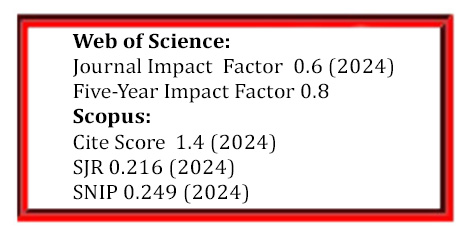Preparation and Characterization of Mesoporous Activated Carbon-Supported Tin Oxide Nanocomposites from Agro-Waste (Cyperus Corymbosus Grass Stem) and its Use as a Highly Efficient Catalyst in a Three-component Reaction
DOI:
https://doi.org/10.5755/j02.ms.37968Keywords:
mesoporous activated carbon, cyperus corymbosus, three-component reaction, nano-catalyst, SnO2Abstract
The present study reports an eco-friendly preparation of mesoporous carbon-supported tin oxide nanocomposite from agro-waste (Cyperus corymbosus grass stem). The CCSAC - SnO2 prepared by greener method successfully utilizing Cyperus corymbosus waste. The prepared CCSAC-SnO2 nanocomposite was characterized using advanced analytical techniques such as Fourier Transform Infrared spectroscopy (FTIR), X-ray diffraction analysis (XRD), Field Emission Scanning Electron Microscopy (FE-SEM), Raman spectroscopy, Brunauer-Emmett-Teller (BET) analysis, X-ray photoelectron spectroscopy (XPS) analysis, and Thermogravimetry Differential Thermal Analysis (TG-DTA). The amorphous and crystalline nature of Cyperus corymbosus stem-activated carbon (CCSAC) and Cyperus corymbosus activated carbon supported tin oxide nanocomposites (CCSAC-SnO2 nanocomposite) was confirmed using powder XRD analysis. FT-IR analysis was used to identify the surface functional groups attached to the CCSAC and CCASC-SnO2 nanocomposite. The element composition of CCSAC and CCSAC-SnO2 nanocomposite was confirmed by EDX analysis. BET analysis confirmed the CCSAC-SnO2 nanocomposite mesoporous nature. XPS and TG-DTA analysis confirmed the elemental composition and thermal stability of the CCSAC-SnO2 nanocomposite. The CCSAC-SnO2 nanocomposite was used as a nanocatalyst in a three-component reaction. This study highlights the potential of utilizing plant waste to prepare valuable mesoporous CCSAC-SnO2 nanocomposite, highlighting both environmental sustainability and catalytic efficiency.
Downloads
Published
Issue
Section
License
The copyrights for articles in this journal are retained by the author(s), with first publication rights granted to the journal. By virtue of their appearance in this open-access journal, articles are free to use with proper attribution in educational and other non-commercial settings.



